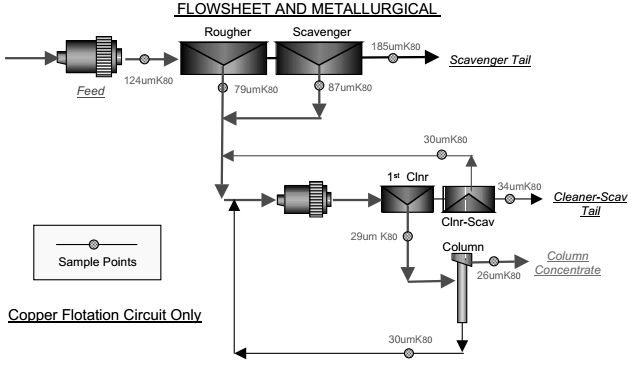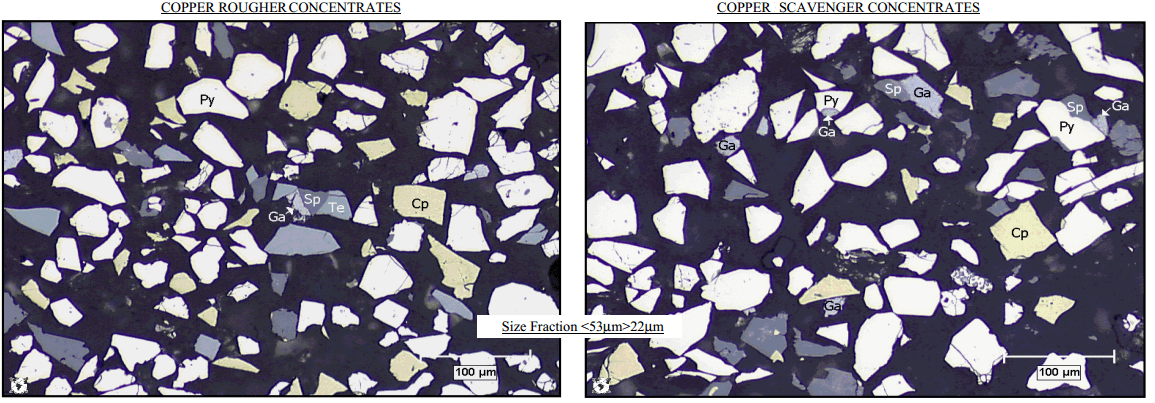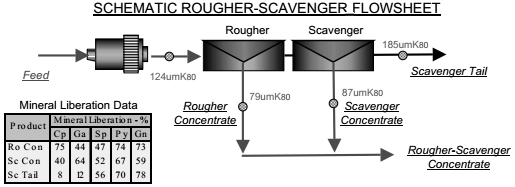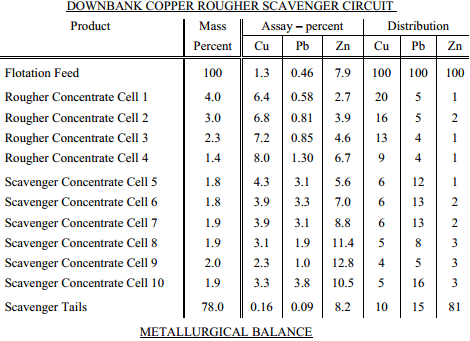A modal examination of the products produced by the copper flotation rougher-scavenger circuit reveal important information regarding the limits to the efficiency of the process, imposed by mineralogy, fragmentation and flotation capacity. Let’s discusses various aspects of rougher flotation circuit performance and how to evaluate its results .


Prior to compositing the individual downbank rougher and scavenger cell products, for modal analysis, the metal distribution by flotation cell products was determined.
It was apparent from this analysis that most of the lead, presumably as liberated galena in the ore, was recovered in the scavenger circuit. Therefore, it was decided to conduct the modal analyses on weighted composites of the rougher concentrate and scavenger concentrate streams.

The recovery of liberated grains of chalcopyrite follows a typical pattern where about 75% of the liberated chalcopyrite is recovered into the rougher concentrate. The copper scavenger circuit essentially recovers the remainder of the liberated chalcopyrite.
Liberated grains of galena are about 15% covered into the copper rougher concentrate. Almost all of the remaining liberated galena is recovered in the copper scavenger concentrate.
The recovery of liberated grains of sphalerite into the rougher and scavenger concentrate increases linearly with flotation time. Overall 15% of the liberated grains of sphalerite are recovered in the combined rougher scavenger concentrate. Liberated pyrite and non-sulphide gangue minerals are efficiently rejected out the scavenger tail stream.

Chalcopyrite binaries with galena and with pyrite are better than 95% recovered into the combined rougher and scavenger concentrates. Chalcopyrite-sphalerite binaries and chalcopyrite multiphase particles are less well recovered, at about 75% for each class.
- Flotation Process Development and Assessment
- Mineral Composition and Fragmentation
- Evaluating Copper Rougher-Scavenger Flotation Circuit Performance
- Measure and Evaluate Flotation Scavenger and Cleaner Tail Losses
- Effect of Regrinding
- Evaluating Copper Flotation Cleaner Circuit Grade/Recovery Results

